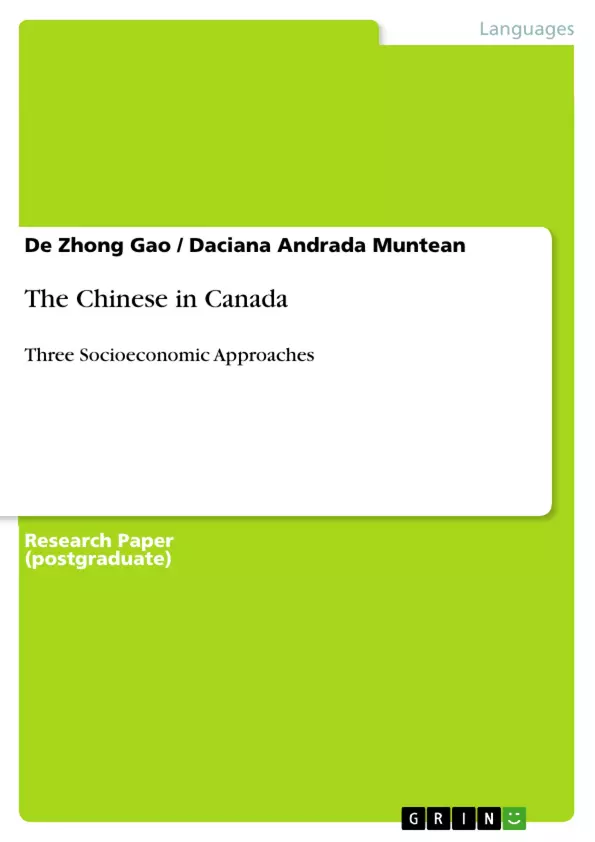Canada is one of the most culturally various countries in the world. It shelters different individuals who fled their home nation, such as for economic reasons, searching for better opportunities and standards of living. One such ethnic group that is part of this multicultural compound characterizing the Canadian population are the Chinese. As many others, they chose Canada to be their new home, envisioning an ameliorated and fairer life than the one they left behind. This is not surprising since, worldwide, Canada has a reputation of being based on meritocracy – with hard work, motivation, and ambition, one can get wherever one wants to. However, below the surface of appearances, this may not be quite so. Indeed, this paper is intended to explore the standing of the Chinese population in Canada from three socioeconomic approaches. But first, who are the Chinese? It is to this point that we turn next.[...]
Inhaltsverzeichnis (Table of Contents)
- Demographic Profile
- Socioeconomic Status and Comparisons
- Labour
- Income
- Education Level and Income
Zielsetzung und Themenschwerpunkte (Objectives and Key Themes)
This paper aims to explore the socioeconomic standing of the Chinese population in Canada through three key approaches: labor force participation, income, and educational attainment. It seeks to understand the relative economic success of Chinese Canadians in comparison to other Canadians.
- Labor force participation of Chinese Canadians compared to other Canadians.
- Income disparity between Chinese Canadians and other Canadians.
- The relationship between education level and income for Chinese Canadians in comparison to other Canadians.
- The historical context of Chinese immigration to Canada and its impact on their socioeconomic integration.
- Factors contributing to the socioeconomic standing of the Chinese population in Canada.
Zusammenfassung der Kapitel (Chapter Summaries)
The paper begins by outlining the demographic profile of Chinese Canadians, highlighting their significant presence in Ontario and British Columbia. It then delves into the socioeconomic status of Chinese Canadians, focusing on their labor force participation, income, and education level.
The labor force participation section compares the employment rates of Chinese Canadians to those of non-visible minorities and average Canadians. It reveals that, while the participation rate for Chinese Canadians is slightly lower, their employment rate is also lower, suggesting potential challenges in securing employment.
The income section compares the average and median income of Chinese Canadians to those of non-visible minorities and average Canadians. The data reveal a significant income gap between Chinese Canadians and other Canadians, with Chinese Canadians earning significantly less on average and having a lower median income.
The final section explores the relationship between education level and income for Chinese Canadians, comparing their earnings to those of other Canadians with the same level of education. While the paper does not reveal the specific findings, it suggests that education level may not fully explain the income disparity between Chinese Canadians and other Canadians.
Schlüsselwörter (Keywords)
The paper focuses on the socioeconomic standing of the Chinese population in Canada, exploring themes of labor force participation, income, and educational attainment. It examines the relative economic success of Chinese Canadians in comparison to other Canadians, utilizing data from Statistics Canada to analyze key trends.
- Arbeit zitieren
- De Zhong Gao (Autor:in), Daciana Andrada Muntean (Autor:in), 2011, The Chinese in Canada, München, GRIN Verlag, https://www.grin.com/document/189237



